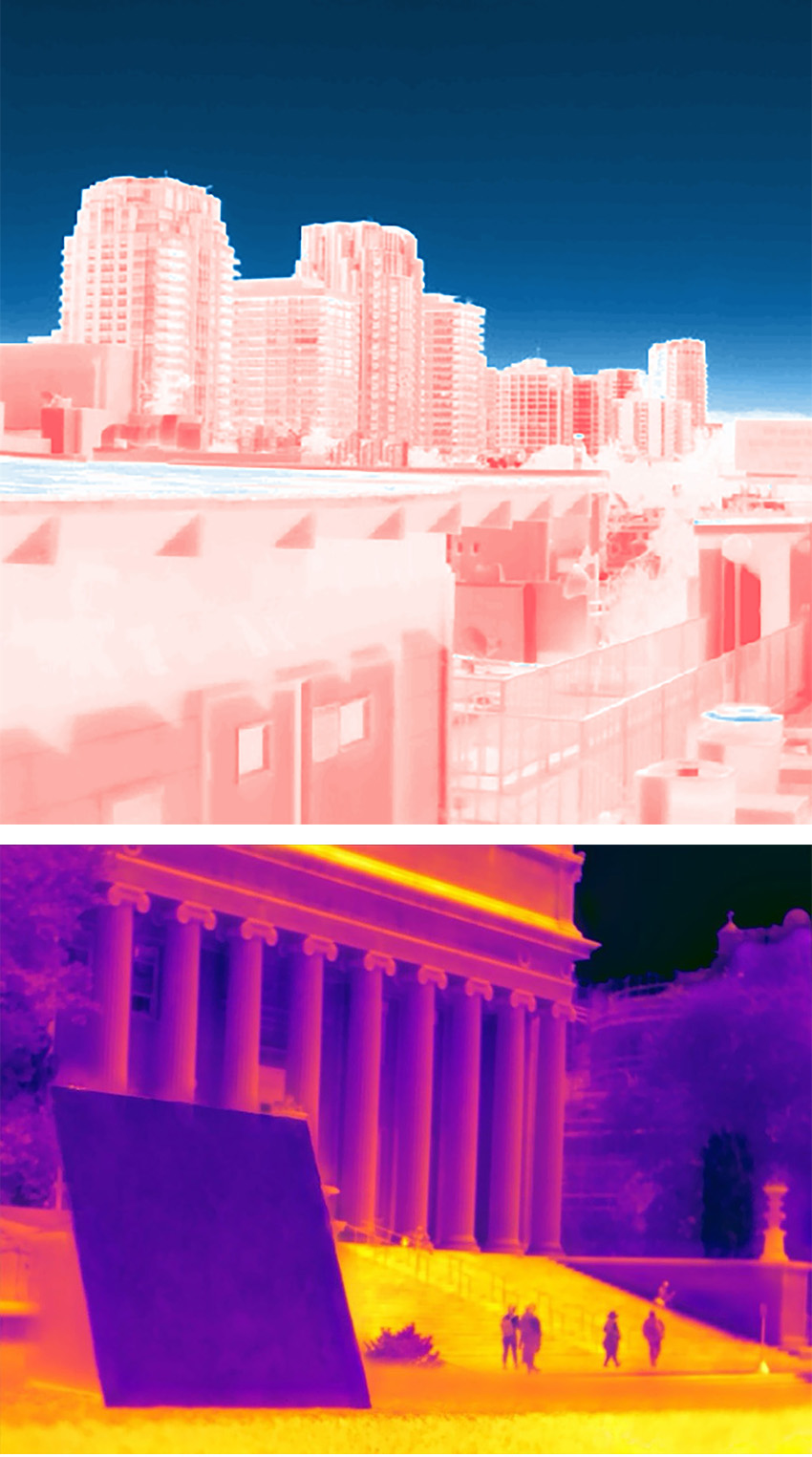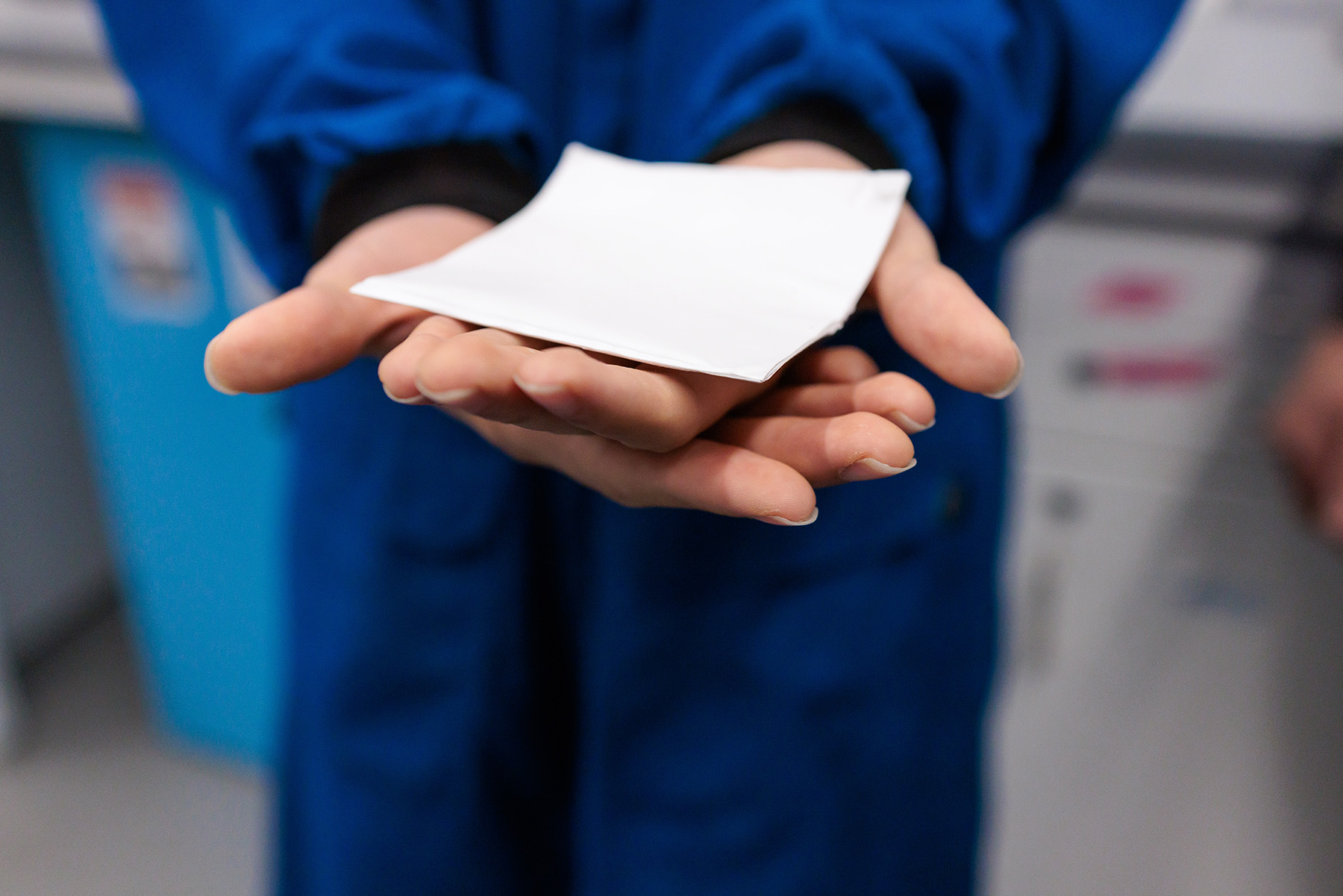
By Kayt Sukel
Hundreds of cities across the country marked their hottest summer on record this year. According to the U.S. Energy Information Administration’s most recent data, an estimated 19% of total energy consumption in U.S. homes can be attributed to air conditioning, with commercial buildings not far behind at 14%.
The associated costs are immense, and they are only expected to grow as the planet continues to warm. This is especially the case in cities, in which residents and workers experience what is known as the urban heat island effect. The dense concentration of steel, concrete, and other built infrastructure traps, absorbs, and retains heat. The need for new ways to manage the heat is pressing, not only to keep energy costs down, but also to minimize the dangerous potential health impacts to humans, such as heat stress.
Jyotirmoy Mandal, Ph.D., an assistant professor of civil and environmental engineering at Princeton University, grew up in Bangladesh. He says he has long been motivated to find ways to manage “a lot of heat without a lot of energy resources.” Radiative cooling (a form of passive cooling) is a process that can dissipate heat by reflecting sunlight back into the atmosphere without energy input, which makes it a promising solution, he says.
“This is a mechanism that can be quite transformative for buildings. And it’s not just cooling. This process can actually help heat buildings in the winter, too,” says Mandal.
From the ground up
Cities around the world have made use of radiative cooling for centuries. Visitors to the Greek islands of Santorini or Mykonos may appreciate the white buildings as gorgeous backdrops for photographs, but that bleached look also has the advantage of helping to reflect sunlight and keep the stone houses cool during the unrelenting summers. The exterior walls are not the only things painted white to reflect the sunlight: The roofs are given the same treatment to help manage interior temperatures.
Mandal notes that many researchers have been hard at work to develop new solar reflective materials to improve performance beyond simple whitewash. There have been several successes, but there has been one consistent issue with these different roof treatments: They did not factor in the heat radiating from nearby buildings and streets. And, as noted earlier, thanks to the urban heat island effect, as cities become more crowded, the heat only increases.

“We need to think in terms of the heat transfer problems we have in the built environment. (We) need to differentiate between what kind of heat we are gaining from our immediate environment and what we are losing to the sky,” explains Mandal. “They are not the same. They have different natures.
“The typical roof-rated coolers falter when you place them on walls or windows because radiative coolers, while they might lose heat to the sky on vertical surfaces, the terrestrial environment becomes so hot that it overwhelms the cooling effect of the sky.”
By focusing on the distinct properties of how heat moves on the ground between buildings, where heat flows across the entire infrared spectrum instead of a narrower atmospheric transfer window, Mandal and colleagues he had worked with at the University of California, Los Angeles found that polypropylene-based materials could be deployed as wallpapers, films, or tints on windows (and other parts of buildings) to help manage building temperatures.
He and his colleagues have tested the idea only in the laboratory so far; but, in theory, these materials passively heat and cool buildings with significant energy savings. Next, the group plans to test it in real-world conditions to mimic the properties of typical building performance. The idea is to determine how to best implement these materials to maximize the impact.
The materials “can be applied on buildings at quite a large scale, and I believe they can make a difference,” says Mandal. “We are also trying to pilot them in low-resource settings, like low-income housing in the Global South, for example.”
Taking a wearable approach
Other researchers are looking beyond the buildings in cities. Po-Chun Hsu, Ph.D., assistant professor of molecular engineering in the University of Chicago Pritzker School of Molecular Engineering, is studying radiative cooling from a different perspective: developing textile materials for those who work in cities. After all, the buildings do not just reflect light (and heat) onto other buildings, they also reflect that heat onto pedestrians making their way to work, the police officers directing traffic, the construction workers maintaining roads, and the landscapers taking care of local parks. They, too, should be protected from those high temperatures.
“The traditional cooling textile relies on moisture or sweat management,” says Hsu. “But radiative cooling uses the sky as a way to dump your heat. From an optical science perspective, there’s nothing stopping us from getting almost 100% reflectivity. In that sense, your daylight experience could be very similar to your nighttime experience.”
Hsu and his team, like Mandal’s, not only considered vertical radiative cooling, but also the heat transfer properties of the surrounding built environment, as they developed a unique three-layered textile to help reflect summer heat away from the human body. The combination of polymethylpentene, silver nanowires, and common cotton or wool reflects not only sunlight but also the heat radiation from the buildings and streets around a person, helping to keep the wearer cool.
Hsu says one of the biggest challenges was creating a material with the right optical properties that could be put into a wearable form. “It has to be lightweight. You can’t rely on a mirror-like finish,” he says. “So, we created something that’s nanoscale so we could use the scattering effect, which gives an ultra-white appearance that reflects sunlight.”

The resulting textile could not only be used to make clothing for essential workers, it could also be a “direct way to manage your heat” in an urban environment, Hsu says. It could also be used by farmers in rural areas.
“We hope that this can have a more direct effect, especially when measuring the physiological response to extreme heat events for people who work in these very challenging scenarios,” Hsu notes.
Preparing for a hotter future
Hsu says that he wants to learn more about how engineers like himself can help prepare cities for increased temperatures — so that these cities can have feasible mitigation solutions and strategies at the ready to protect their communities.
“We know that these populations are more vulnerable,” he says. “In addition to making sure that workers are well hydrated, can we have things available like these textiles to prevent heatstroke or other problems from happening?”
Mandal says that preparing for a hotter future will definitely require an all-hands-on-deck approach. Having new, entirely passive ways to heat and cool buildings with the seasons is important.
But engineers, designers, scientists, and infrastructure experts should also consider other mitigation strategies to deal with increasing temperatures. The more ideas, the better. “We really need a confluence of ideas from civil engineering, from optics, from people who think about entire cities, from materials, in order for us to have designs that might be very novel but will work very well in context,” Mandal reasons.
Kayt Sukel is a science and technology writer based outside Houston.
This article first appeared in the November/December 2024 issue of Civil Engineering as “The Power of Radiative Cooling.”



